Key takeaways:
- Selective mutism is an anxiety disorder that isolates children, causing them to speak comfortably at home but struggle in social settings.
- Building speaking confidence is crucial and can be achieved through practice in low-stress environments, visualization, and embracing authenticity.
- Safe environments encourage personal expression, helping individuals practice speaking without the fear of judgment.
- Supporting individuals with selective mutism through patience, encouragement, and affirmations significantly boosts their confidence and communication skills.
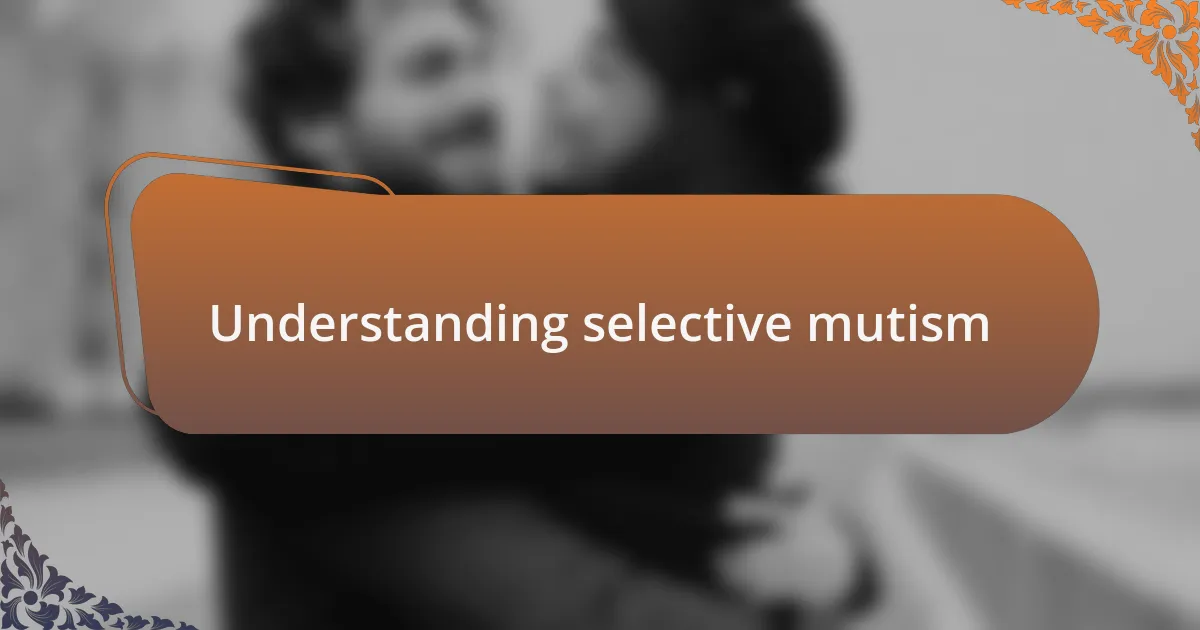
Understanding selective mutism
Selective mutism is a complex anxiety disorder that primarily affects children, leading them to be unable to speak in certain social situations, even when they can communicate comfortably in familiar settings. I remember watching a close friend struggle during class presentations, initially vibrant with ideas but silenced by anxiety when faced with peers. It makes me wonder, what hidden battles do they face daily?
Understanding selective mutism means recognizing that it’s not simply shyness or a refusal to talk; it stems from overwhelming anxiety and fear in specific environments. Sometimes, I find myself reflecting on the moments when my friend finally found her voice, encouraged by a kind teacher. Isn’t it fascinating how the right support can shift one’s perspective?
There’s a profound sense of isolation that often accompanies selective mutism, which can leave individuals feeling unheard and misunderstood. I once spoke to a parent whose child experienced this; they shared heart-wrenching moments of watching their child communicate brilliantly at home yet silence gripping them in public. How powerful it is to be seen and heard, yet how challenging when those connections feel just out of reach!
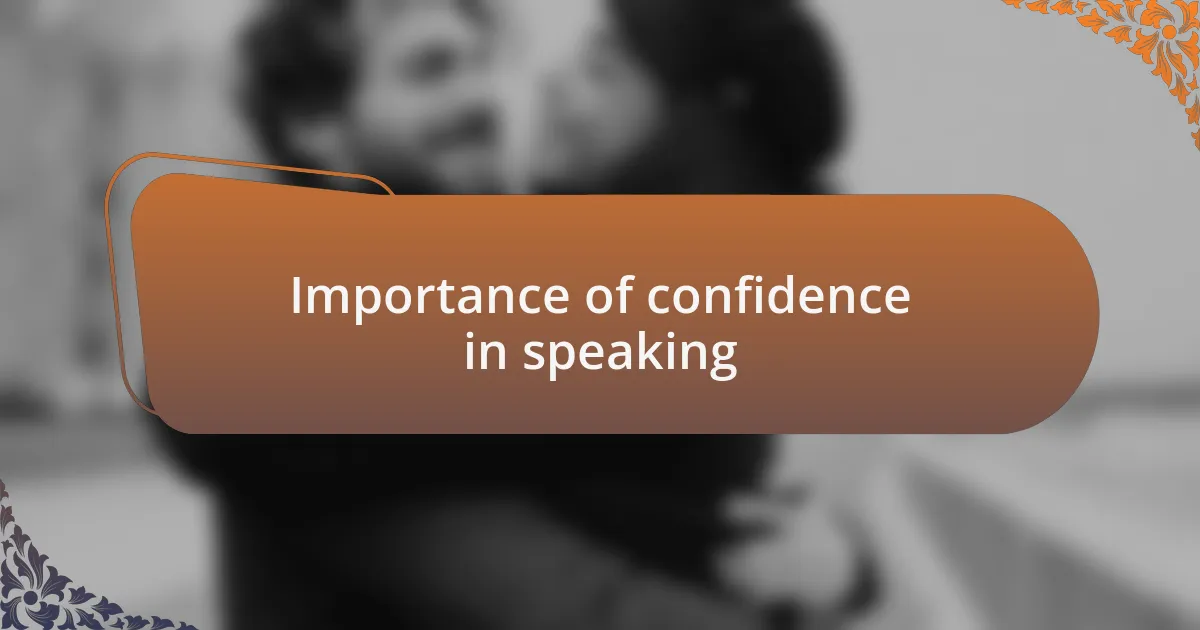
Importance of confidence in speaking
It’s hard to overstate the importance of confidence in speaking, especially for someone dealing with selective mutism. I recall a community event where a young girl finally took the stage, her voice trembling at first. It was inspiring to watch as her confidence grew with each word, transforming nervous whispers into bold statements. Isn’t it incredible how confidence can illuminate thoughts that might otherwise remain hidden?
When individuals feel confident in their speaking abilities, they open up a world of connection and expression. I’ve seen firsthand how a supportive environment can empower someone to articulate their feelings and opinions, fostering deeper relationships. What would happen if we all had that kind of encouragement?
Building confidence is essential not only for effective communication but also for a person’s self-esteem. I’ve met many individuals who, after overcoming their hesitations, radiated a newfound assurance that positively impacted other areas of their lives. Isn’t it remarkable how finding one’s voice can be a gateway to personal growth and deeper social engagement?
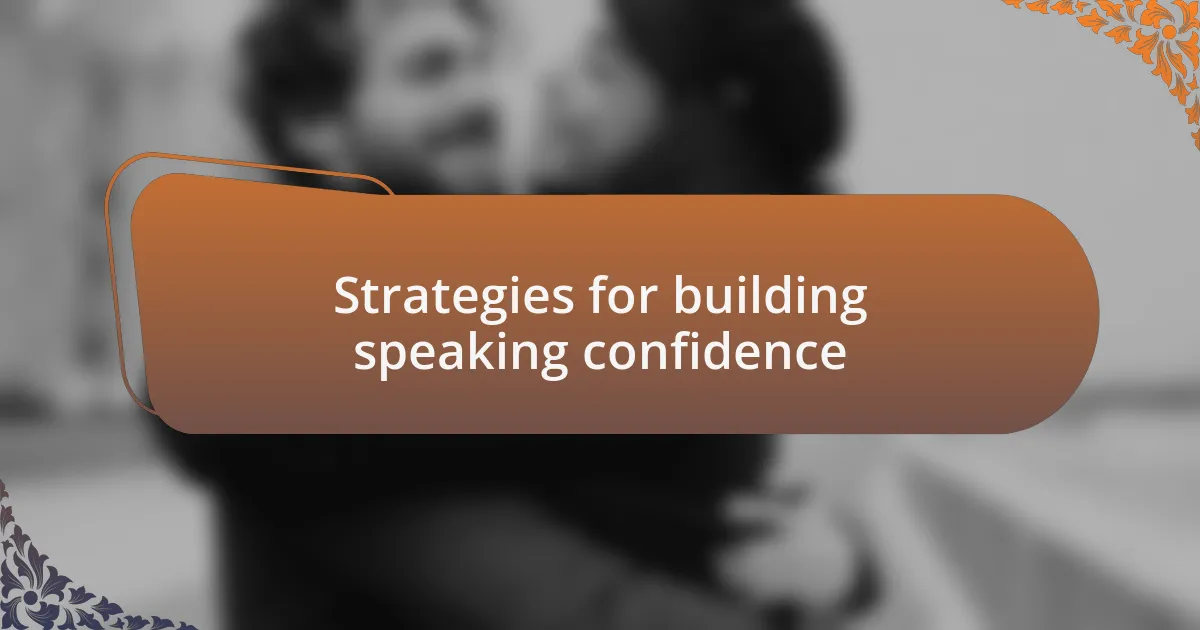
Strategies for building speaking confidence
One powerful strategy for building speaking confidence is to practice in low-stress environments. I remember hosting small gatherings with friends where I could experiment with expressing my thoughts without the fear of judgment. This gradual exposure helped me become more comfortable with my voice, allowing me to express myself more freely over time. Have you ever tried talking to just a friend before a bigger crowd? It can make a world of difference.
Another effective approach is visualizing success. Before I took on a public speaking role, I would envision myself delivering my message with poise and clarity. This mental rehearsal transformed my anxiety into excitement; I could almost feel the audience’s positive energy reflecting back at me. Have you ever imagined yourself succeeding at something you were anxious about? It’s almost like giving your confidence a sneak peek of what’s to come.
Engaging in role-playing scenarios can also be a practical tool for boosting speaking confidence. For instance, I once joined a local improv group, where I learned to think on my feet and express myself spontaneously. Each session built my comfort level, not just with speaking but with embracing mistakes as part of the process. Isn’t it fascinating how stepping out of our comfort zones can lead to growth in unexpected ways?
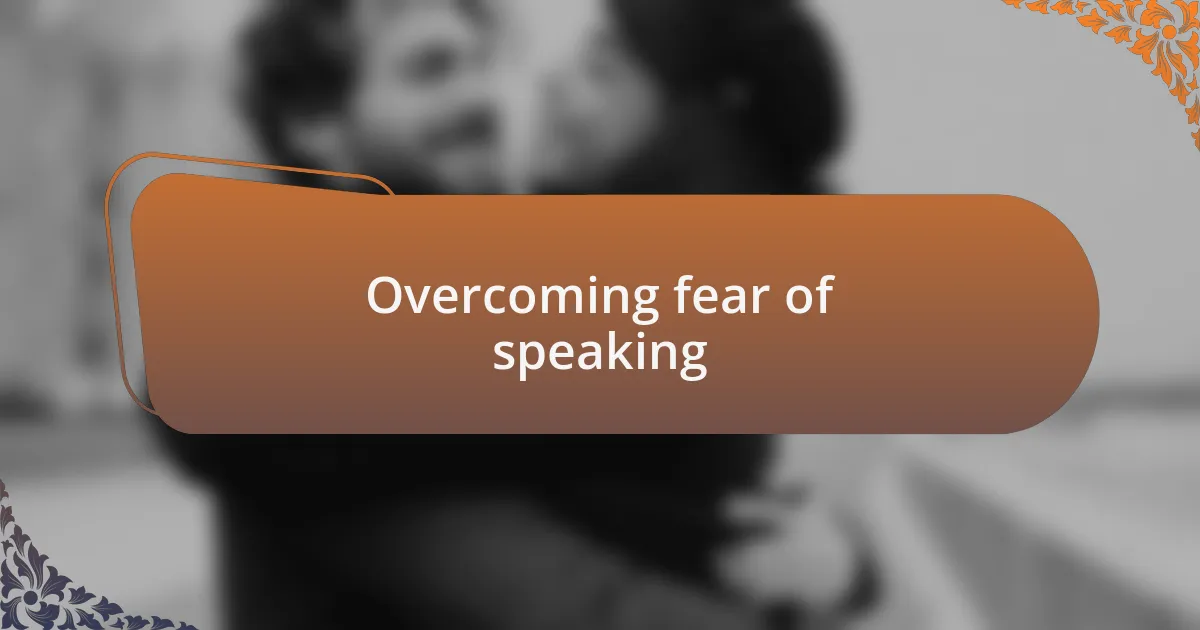
Overcoming fear of speaking
For many, the fear of speaking stems from worrying about making mistakes or being judged. I vividly remember my first experience in a community meeting where I hesitated to share my thoughts, convinced that everyone was watching me closely. Over time, I learned to reframe that fear; I realized that most people are too focused on their own contributions to critique mine. Doesn’t it feel liberating to think that we’re all in this together?
A practical method I found helpful was to start small by speaking up in familiar settings. I joined a book club that emphasized discussion, where I slowly gained the courage to share my opinions on the stories we read. The support and encouragement from others made such a difference; I often think about how community can be a powerful ally. Have you considered joining a group that fosters open communication? It could be the very boost you need.
Lastly, embracing imperfection played a crucial role in overcoming my fear. Instead of aiming for flawless delivery, I shifted my focus to sharing my genuine self. I remember a presentation where I stumbled over a few words but chose to laugh it off rather than let it derail my confidence. That moment taught me that authenticity resonates more with people than perfection ever could. Have you had an experience where being yourself led to greater connection?
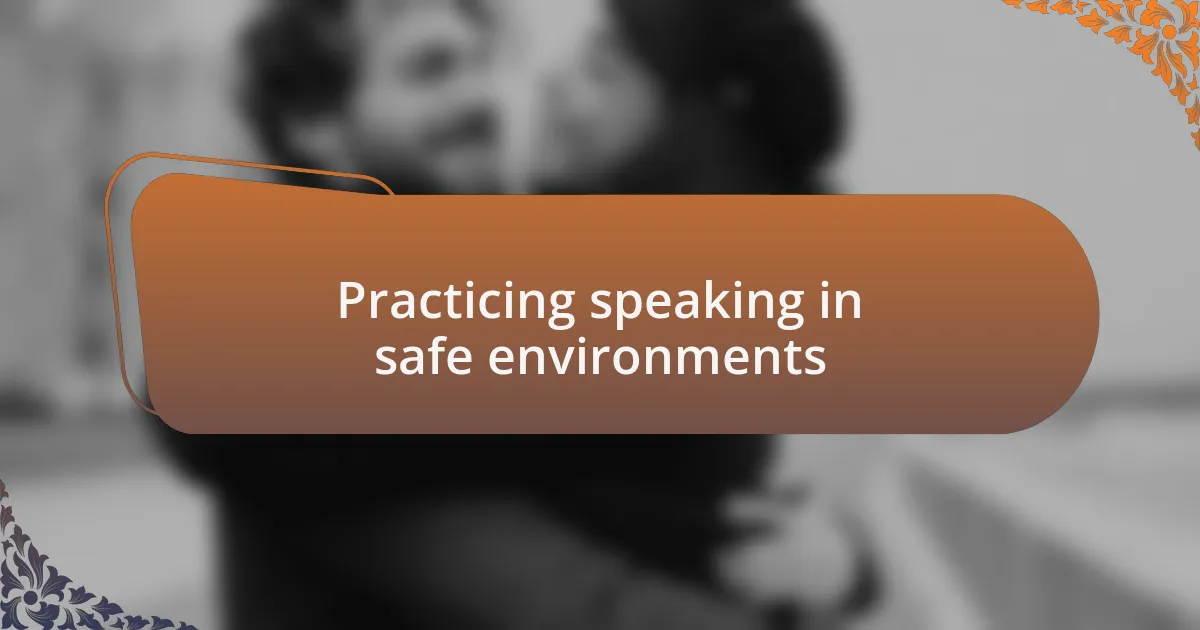
Practicing speaking in safe environments
Practicing speaking in safe environments can truly transform your experience. I remember visiting a close friend’s home for a small gathering where I felt completely at ease. It was there that I cautiously shared a funny story about my day. The laughter and encouragement I received built my confidence and made me realize that safety in speaking starts with trust in those around you. Have you found a place that feels safe enough to practice speaking?
Creating a risk-free environment doesn’t have to involve large groups. I often practiced speaking aloud in my room, pretending I was sharing stories with a friend. This not only helped me get comfortable with my voice but also allowed me to articulate my thoughts without the fear of judgment. Imagine how freeing it feels to hear your ideas out loud, even if it’s just to the walls around you. What would it be like for you to have a space where you could express yourself freely?
As I explored various safe spaces, I discovered that even familiar places like coffee shops or community centers could be supportive. One day, I decided to chat with a barista about my favorite drink. That short interaction felt monumental; I practiced my speaking skills without the pressure of a formal setting. How about you? Could you strike up a casual conversation to build your confidence? These small moments can significantly contribute to overcoming speaking anxiety, enriching your journey towards confident communication.
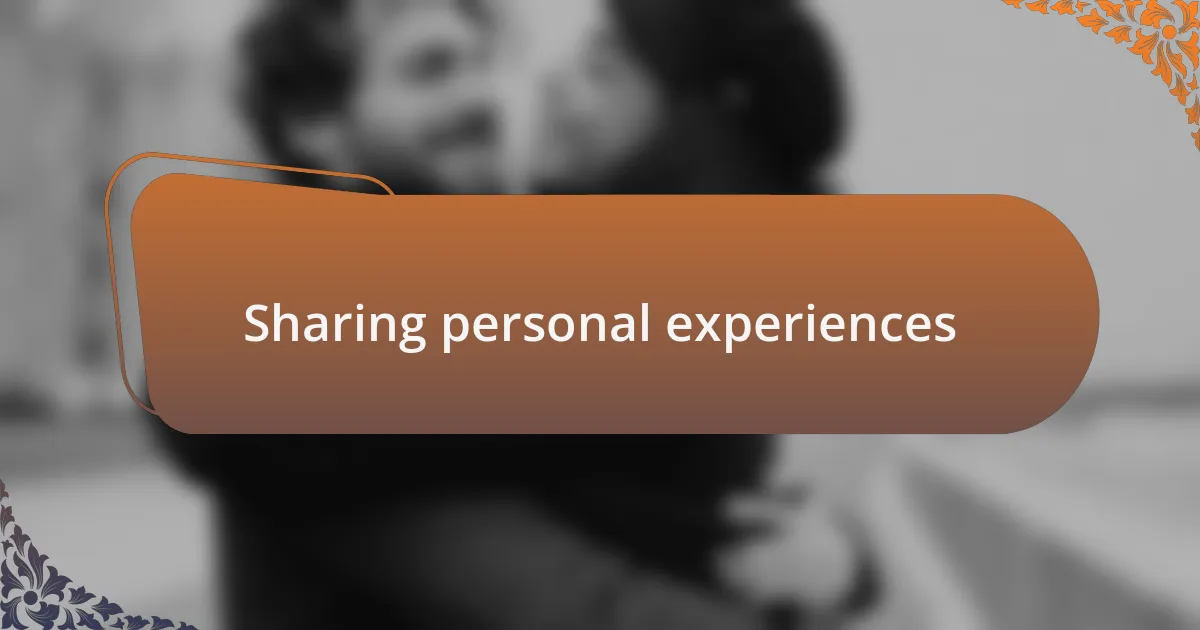
Sharing personal experiences
In my journey, sharing personal experiences often led to unexpected breakthroughs. I recall a day when I volunteered to read at a local event, my heart raced as I stepped up to the microphone. As I delivered my piece, the nods and smiles from the audience felt like a warm embrace, filling me with a sense of belonging that I never anticipated. Have you ever felt that surge of positivity from a supportive crowd?
Another memorable occasion happened during an intimate book club meeting. I found myself sharing my thoughts on a recently-read novel, and as I spoke, I noticed how my voice gradually became steadier. The gentle encouragement from others made me realize that vulnerability can spark connection. Isn’t it interesting how our stories can resonate with others, building confidence through shared experiences?
I also remember chatting with a mentor, who encouraged me to recount some of my struggles with speaking. As I shared my stories, the validation I received was incredibly empowering. It made me recognize that many people face similar challenges, reinforcing the idea that we’re not alone in our journey. Have you had moments where sharing your experiences opened doors to understanding and growth?

Encouraging others with selective mutism
When encouraging others with selective mutism, I often highlight the power of small, supportive gestures. One time, I was part of a small group where one member struggled to express their thoughts. I decided to lean in and listen actively, smiling and nodding. The relief on their face when they finally spoke was priceless. Have you ever witnessed how just a little encouragement can empower someone to find their voice?
In another instance, a friend of mine was grappling with the anxiety of speaking in front of others. I suggested they practice with friends in a safe space. We created a judgment-free environment where they could express themselves freely. Watching their confidence grow with each practice session was a reminder of the importance of patience and nurturing support. Have you ever provided a space for someone to feel safe? It’s truly life-changing.
I’ve found that sharing simple affirmations can go a long way. I once made a habit of texting a friend encouragement before their speaking events. Knowing that someone believed in them transformed their approach to those moments of speaking dread. Have you thought about how a few encouraging words could inspire someone to take a step forward? It’s amazing what a little support can ignite in someone struggling to speak.